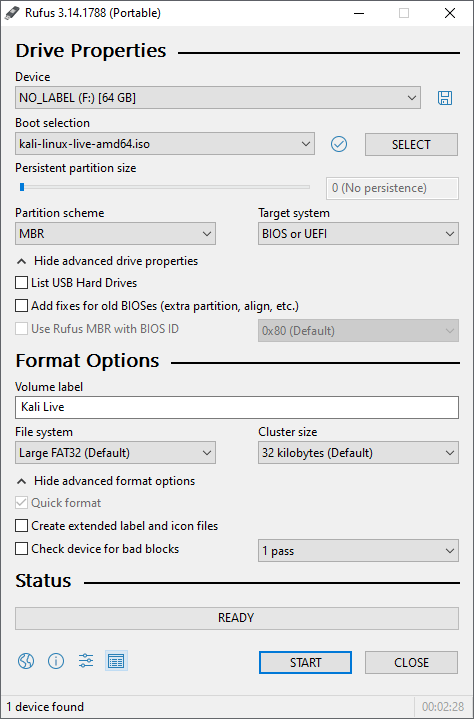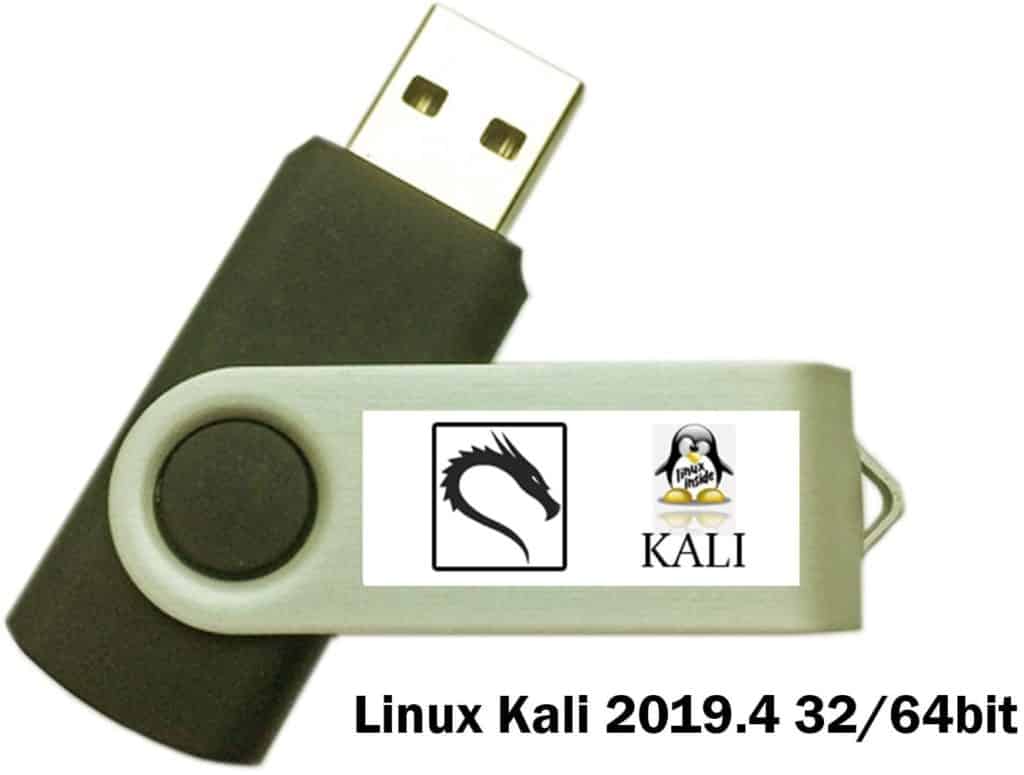
- #Kali linux usb how to#
- #Kali linux usb install#
- #Kali linux usb driver#
- #Kali linux usb software#
- #Kali linux usb iso#
#Kali linux usb iso#
In the first step, we need to select the distribution, after that browse the ISO image from our machine as well as select the USB drive from the drop-down and click on the create button. In the above screenshot, we can see the different options. Open the tool and accept the terms and conditions after that we get a new screen as shown in the below screenshot. If we don’t have the ISO image of Kali and the Universal USB tool. After that, we need to store both files inside the folder and open the Rufus tool. In the second step if we don’t have the Rufus tool then we need to download it from the official website of Rufus. In the same way we need to download the ISO image of Kali if we don’t have it. After that Ether the tool gives the alter message such as the image has been flashed, and now we can safely remove our USB and continue with Kali Linux boot. Now we need to click on the flash button. In the next step, we need to select the Kali Linux image which we already downloaded as well as also need to verify whether the USB is plugged in or not. In the second step, we need to attach the USB drive to the machine as shown in the below screenshot.

Need to check the ISO file, if we don’t have then we need to download it from the official website. Nonetheless, Frameworks with an immediate SD card space can utilize an SD card with a comparable limit very much like the USB Drive, the interaction glimmering will, in any case, continue as before.īasically, there are three different methods.
#Kali linux usb install#
If we have a Windows operating system, then windows do not have any tool, so we need to install any third-party tool such as Etcher.If we don’t have one, then we can download it from the official website of Kali Linux. First, we need to verify the ISO image of Kali Linux which we want to execute.
#Kali linux usb how to#
How to Create Kali Linux Bootable USB Windows?īefore creating a bootable USB, we need to consider some prerequisites as follows: In the event that we would like to utilize Etcher, follow similar headings as a Windows client. The accompanying model expects a Linux Mint 17.2 work area – contingent upon the distro we’re utilizing, a couple of points of interest might differ somewhat, yet the overall thought ought to be practically the same. Note that we should be running as root, or executing the dd command with sudo. Whenever we’ve downloaded and confirmed the Kali ISO document, we can utilize the dd command with sudo to duplicate it over to a USB drive utilizing the accompanying strategy. Making a bootable Kali Linux USB drive in a Linux climate is simple. The vast majority picked the Kali live picture since they need to boot from a USB drive and utilize a live climate or introduce Kali Linux default settings. The ISO picture we downloaded in the past step will be utilized to compose our USB streak drive. To introduce Kali Linux onto the USB drive, the client should consume the ISO onto a USB thumb drive.

We have different free open-source tools to make bootable USB drives.
#Kali linux usb driver#
After the bootable of the USB drive, we can directly use Kali Linux as Live from the USB driver whenever we require it.Creating a Kali bootable USB is very easy and simple.
#Kali linux usb software#
Web development, programming languages, Software testing & others Key Takeaways I know we have already mounted the drive, but for some reason this step didn't work previously, but worked fine after following the previous steps.Start Your Free Software Development Course I tried F1 through to F5 until I found the correct combinationįrom the menu tell it to mount the CDROM, if asked choose /dev/sdc1 and /cdrom. Note: Kali told me to press ( Alt+ F1), but this didn't work. Switch back to the installer ( CTRL+ Alt+ F5) Mount the Kali CD with the mount command: ~ # mount -t iso9660 /dev/sdc1 /cdromĬheck the contents of /cdrom are as expected: ~ # ls /cdromĪutorun.inf efi g2ldr.mbr md5sum.txt win32-loader.ini Also you can see the storage type is iso9660, not vfat Note: I have shortened my list to the relevant row. Get a list of devices with blkid: ~ # blkid Note: Kali told me to press ( Alt+ F2), but this didn't work When you get the CDROM not found error follow these steps: I eventually figured it out, the issue is the file format is not vfat, but iso9660.

I tried all the answers here and more google results, but none worked.


 0 kommentar(er)
0 kommentar(er)
